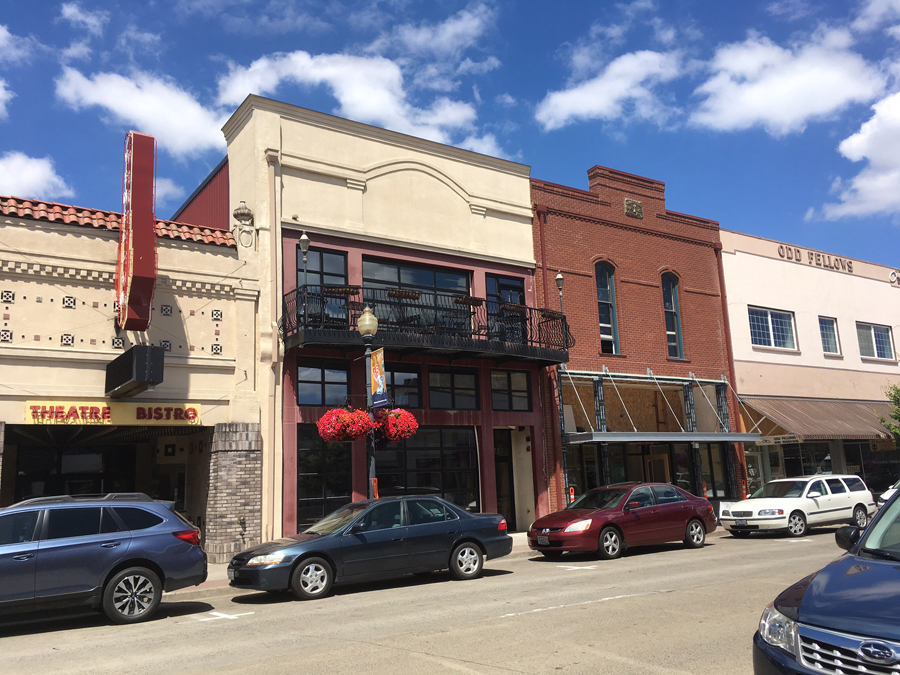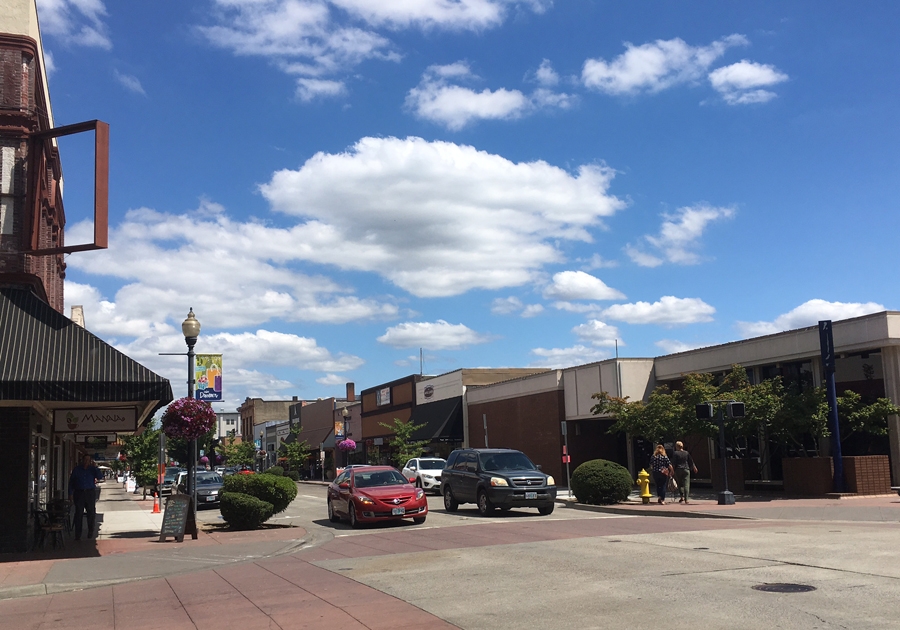A dearth of housing hinders efforts to draw residents and new retailers.
On a weekday afternoon on Main Street, an antique store, gift shop and candy store are mostly empty, and the sidewalks are bereft of pedestrians.
To be sure: the city isn’t always so sleepy. But civic and business leaders here agree the downtown needs more energy and life on the street.
Like many cities big and small, Hillsboro is trying to revitalize its central core.
 Downtown facades get a facelift.
Downtown facades get a facelift.
But the community faces a unique challenge. The downtown, sited nearly 20 minutes off Highway 26, lacks housing. And the biggest employers — Intel and Nike — are located too far away for employees to pop in for lunch.
Hillsboro’s overall population is poised to increase from 100,000 to 130,000 by 2040, according to Metro projections. But most of that growth is expected to take place outside the central core.
“Many people don’t know downtown exists,” says Saira Siddiqui, executive director of the Hillsboro Downtown Partnership. “Especially if they live and work in East Hillsboro, enticing people to come out to West Hillsboro can be a challenge.”
Not that the area lacks identity — or community spirit. Successful events like the 35-year old farmer’s market, and a newer, entertainment-themed Tuesday Night Market attract throngs of people to Main Street.
And revitalization efforts are underway. The state recently doled out a $100,000 grant to restore the last Art Deco building in the city, the Hill Theater. And now, to help attract more visitors, the partnership is trying to get a new mix of businesses to locate in the area.
“In order to increase foot traffic and get more people to use downtown frequently, we are pushing for [existing] service businesses to shift over to retail, restaurant, and entertainment venues,” said Siddiqui, who joined HDP in 2015.
“We are doing this through education to property and business owners, and business recruitment and outreach programs.”
Jeff Nelson, owner of Le’Stuff Antiques, has operated his downtown business for about 20 years. He is one of several business owners who has improved their storefronts in a push to revitalize the area.
Revitalization is slow, concedes Nelson, who is also on the HDP board. But he senses new momentum.
For most of the past two decades, downtown “has been in a ‘take two steps forward, then one step back’ process,” he says. But “I’d say we’re finally making more forward progress these days.”
 Le’Stuff Antiques features items that appeal to modern sensibilities
Le’Stuff Antiques features items that appeal to modern sensibilities
Karla Antonini, Hillsboro’s economic development project manager, agrees. But the key to marketing and branding efforts, she says, is housing.
The demand is there. The 4th Main Apartments opened three years ago. Six months later, the 71-apartment complex was full.
“As you get more and more people living downtown the amenities will follow, like cool boutiques, a brew pub, more restaurants and perhaps a boutique hotel,” Antonini says.
A parcel of land known as Block 67 holds promise. The city purchased the land in December 2016 with plans for mixed-use development.
Antonini says the request for qualifications has yet to move forward. Echoing Siddiqui, she says residents want more retail businesses.
A recent city survey found the most requested businesses are bakeries, clothing stores, brunch restaurants, a copy center and anything related to natural and healthy products.
But attracting those businesses isn’t easy. Up to this point, most new development has sprung up in retail corridors around malls like Tanasbourne and planned communities like Orenco Station.
To make matters more complicated — boosters don’t want downtown to lose its individual character in the name of growth.
“We want to preserve the authenticity and history of Hillsboro,” Siddiqui says.





